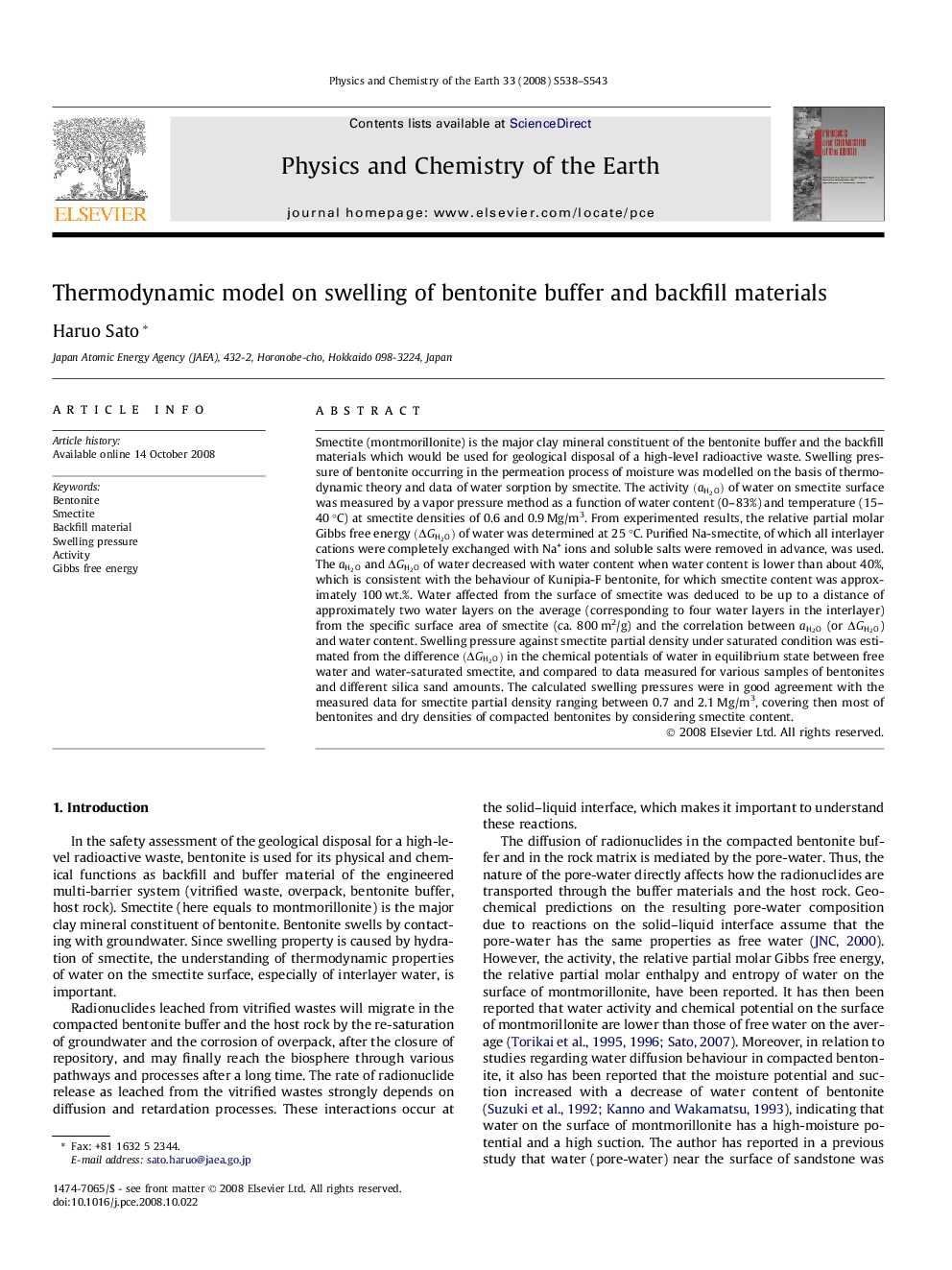| Article ID | Journal | Published Year | Pages | File Type |
|---|---|---|---|---|
| 4721665 | Physics and Chemistry of the Earth, Parts A/B/C | 2008 | 6 Pages |
Smectite (montmorillonite) is the major clay mineral constituent of the bentonite buffer and the backfill materials which would be used for geological disposal of a high-level radioactive waste. Swelling pressure of bentonite occurring in the permeation process of moisture was modelled on the basis of thermodynamic theory and data of water sorption by smectite. The activity (aH2O)(aH2O) of water on smectite surface was measured by a vapor pressure method as a function of water content (0–83%) and temperature (15–40 °C) at smectite densities of 0.6 and 0.9 Mg/m3. From experimented results, the relative partial molar Gibbs free energy (ΔGH2O)(ΔGH2O) of water was determined at 25 °C. Purified Na-smectite, of which all interlayer cations were completely exchanged with Na+ ions and soluble salts were removed in advance, was used. The aH2OaH2O and ΔGH2OΔGH2O of water decreased with water content when water content is lower than about 40%, which is consistent with the behaviour of Kunipia-F bentonite, for which smectite content was approximately 100 wt.%. Water affected from the surface of smectite was deduced to be up to a distance of approximately two water layers on the average (corresponding to four water layers in the interlayer) from the specific surface area of smectite (ca. 800 m2/g) and the correlation between aH2OaH2O (or ΔGH2OΔGH2O) and water content. Swelling pressure against smectite partial density under saturated condition was estimated from the difference (ΔGH2O)(ΔGH2O) in the chemical potentials of water in equilibrium state between free water and water-saturated smectite, and compared to data measured for various samples of bentonites and different silica sand amounts. The calculated swelling pressures were in good agreement with the measured data for smectite partial density ranging between 0.7 and 2.1 Mg/m3, covering then most of bentonites and dry densities of compacted bentonites by considering smectite content.
